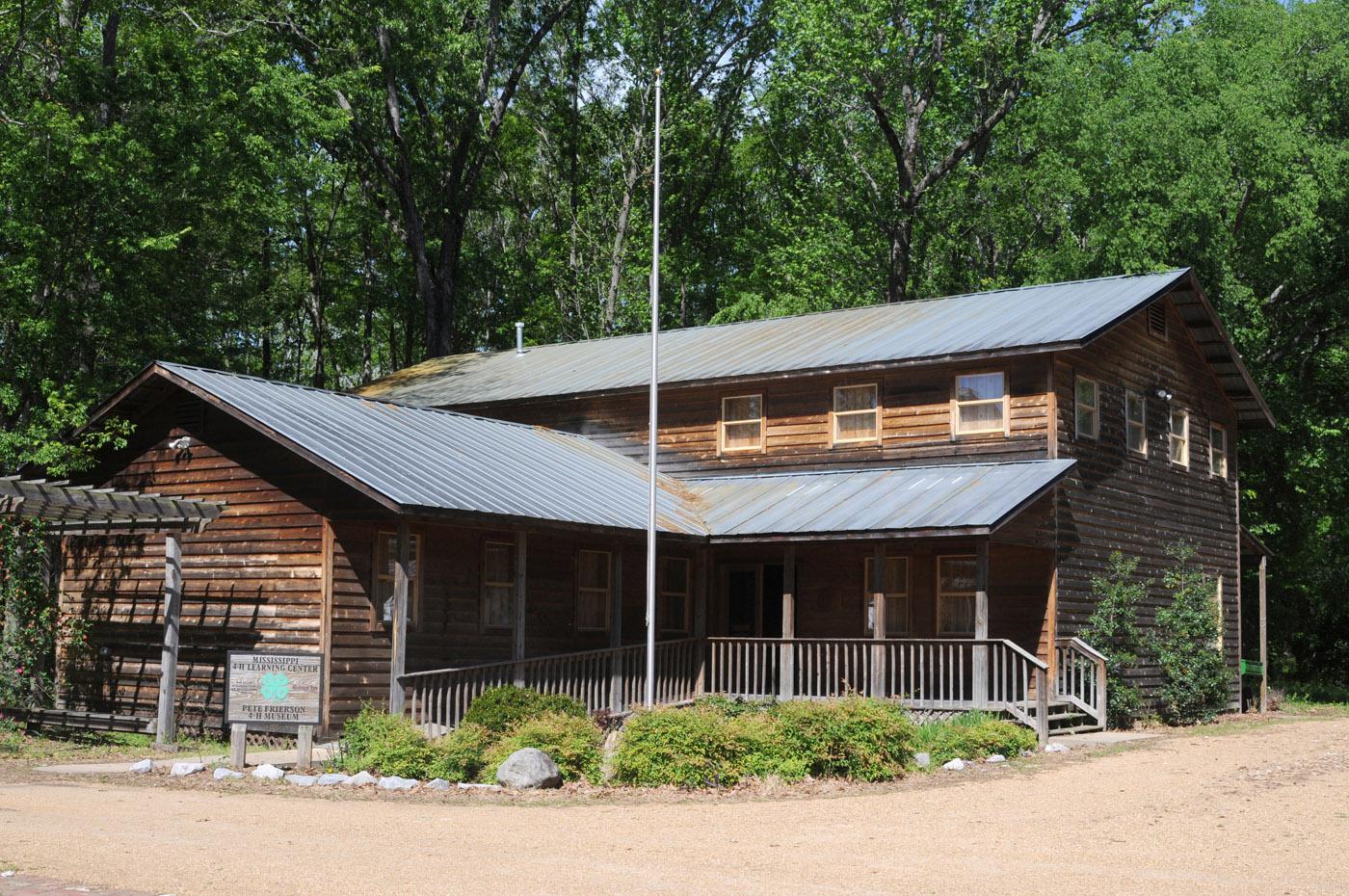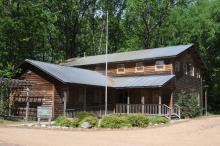Information Possibly Outdated
The information presented on this page was originally released on April 28, 2011. It may not be outdated, but please search our site for more current information. If you plan to quote or reference this information in a publication, please check with the Extension specialist or author before proceeding.
4-H Learning Center gets high-tech remodel
MISSISSIPPI STATE – A museum showcasing the contributions of Mississippians who have participated in America’s largest youth organization is getting a high-tech renovation.
The Mississippi 4-H Learning Center and Pete Frierson Museum is undergoing a transformation of its exhibits, funded by a $120,000 grant from the Mississippi Land, Water and Timber Resources Board. As part of the larger Mississippi Agriculture and Forestry Museum, the 4-H learning center focuses on the connection between youth and agriculture.
The addition of new technology will build a bridge between 4-H’s history and its young visitors. Rather than presenting static displays of memorabilia, innovative exhibits will engage visitors in the legacy of 4-H and its impact on Mississippi. Flat-panel screens paired with audio bubbles that focus sound down onto small groups enable guests to hear recorded information without distracting other visitors in the room. Touch-screen computers with interactive programs that teach about 4-H will allow visitors to explore the youth program through a modern platform.
“The goal of this technology is to better enable us to tell the 4-H story. These video productions will allow teachers to bring classes through the museum and give kids a chance to experience 4-H without requiring a full-time staff,” said Morris Houston, Mississippi State University Extension Service 4-H development officer. The 4-H learning center receives about 36,000 student visitors per year, mostly from urban and suburban environments.
“Many of the children who visit have little contact with the agrarian way of life,” Houston said. “We want to make a strong connection between agriculture and their lives.”
To better share the stories related to the artifacts and events highlighted in the museum, the new exhibits focus on personal connections.
“We’re creating an exhibit that looks like a young 4-Her’s bedroom. We’ll put memorabilia on the wall, and the flat panel screen will show video footage of Mary Jo Wedgeworth and her daughter, U.S. Congressman Martha Blackburn,” said Tiffany Holder, curator for the museum. “Mary Jo Wedgeworth was the 1944 National Achievement Award in Home Economics. She donated the set of silver flatware she received in recognition of this award to the 4-H Learning Center and Pete Frierson Museum. Congressman Blackburn credits 4-H with teaching her leadership skills. They exemplify the impact 4-H has on the lives of participants.”
The most popular exhibit since the learning center opened in 2007, the life-size fiberglass cow named MS Cloverbelle, has a new stall in the literacy area.
“All of the kids want their picture taken when they get to milk Cloverbelle,” Houston said. “The experience helps them understand that milk comes from a cow first, then the grocery store.”
In addition to the museum space, the 2,000-square-foot facility houses a multi-purpose room used for educational activities. A high-tech display that demonstrates the relationships between different types of soil, wells and aquifers shares space with a portable computer lab for use in environmental education programs.
“The goal of the renovation is to create a place where teachers and children can see connections between agriculture, their everyday lives, and the activities 4-H offers Mississippi’s young people,” Houston said.
State 4-H program leader Susan Holder agreed.
“These new exhibits will help us continue the work we started when the museum first opened. We wanted to honor the past by collecting and displaying artifacts that show the history of rural Mississippi from a 4-Her’s perspective,” she said. “We celebrate the present by showing kids what they can do in 4-H.”
“We also wanted to envision the future: where is 4-H going? The museum’s use of technology shows that 4-H is about science, robotics and child-centered experiences in addition to agriculture. Technology also enables us take rural America to a larger audience through the internet,” she said.
Visitors to the museum will receive information about online lesson plans, interactive learning games, digital archives and social media. These new learning opportunities send the message that 4-H empowers young people to reach their full potential by offering hands-on learning, research-based youth programs and adult mentors who encourage responsibility and community service.
In the “Small Town Mississippi” area, where the 4-H learning center is located, visitors can explore the museum’s grounds and see gardens planted with vegetables and walk through a barn for a closer look at chickens and other farm animals.
“It’s important to visit the museum because without knowing where you came from, you won’t know where you’re going,” Sandy Harvard, director of educational activities at the Mississippi Agriculture and Forestry Museum said. “Visitors should have a better understanding of the history of agriculture, how it impacts our state today and the youth opportunities 4-H offers.”



